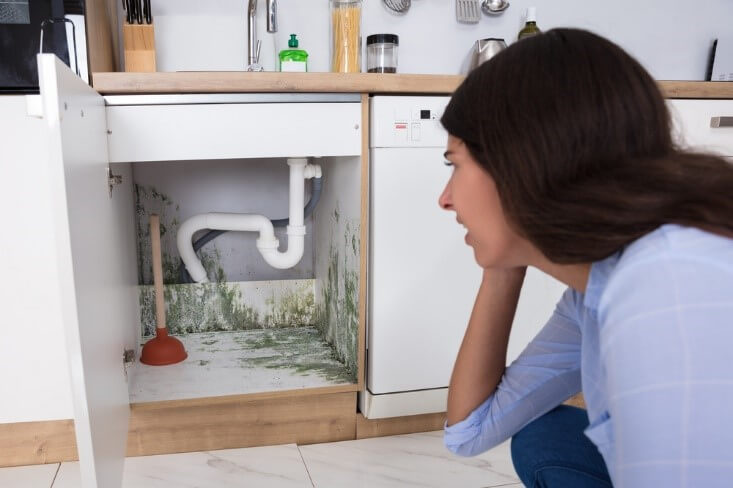
New South Wales has been crowned the mould capital of Australia, according to a new survey from Compare the Market*.
One in five people from New South Wales surveyed (20.6%) admitted they’ve experienced mould in their home in the last 12 months. This is above the national average of 18.7% and ahead of other states including Victoria (19.4%), Queensland (19.4%), South Australia (14.3%) and Western Australia (17.1%).
The research also revealed that New South Wales homes are also the most likely to experience dampness, at a rate of 11.7%. This is again more than the national average of 9.9% and ahead of Queensland (7.5%), South Australia (7.8%), Western Australia (10.5%) and Victoria (11.2%).
Despite many Australians experiencing mould and dampness in the home, Compare the Market’s Executive General Manager of General Insurance at Compare the Market, Adrian Taylor, said there’s a misconception that damage caused by mould and dampness will automatically be covered under your home’s insurance policy.
“We’ve already started to experience those warm, muggy days, which can increase the risk of mould and dampness around the home. With the risk of high rainfall, humidity and potential flooding increasing over the coming months, people may be confused about whether their insurance covers mould,” Mr Taylor said.
“Generally, home and contents insurance policies don’t cover mould and dampness. However, your insurer may provide cover in some very specific cases. For example, mould may be covered if it results from an insured event covered by your policy, such as flood or storm damage or an escape of liquid.
“It’s always a good idea to read your policy’s Product Disclosure Statement (PDS) for terminology, exclusions and inclusions, as they can and do vary between providers.
“We don’t want to see anyone being caught out by unpredictable weather events and the issues they can cause.”
Mr Taylor said there were some cases where your home’s insurance may cover mould damage.
“Insured events can vary between providers, so ensure you’re adequately protected if you think you may need to claim in the future. If in doubt, pay careful attention to the definition of an insured event when comparing.
“Many insurers don’t cover mould or dampness because home and contents isn’t intended to cover preventable events and most insurers view mould damage as preventable,” Mr Taylor said.
“We know that mould is quite common in Australia and there are measures households can take to prevent mould damage, like safely cleaning affected areas with mould sprays, using waterproof paint, adequately ventilating areas and controlling humidity.”
If you hold a policy that does cover mould damage caused by floods, storms or weather events, Mr Taylor said you’d likely be required to show proof that the damage was linked to a weather event.
“Insurers would need to know that the damage was specifically linked to a flood, storm or weather event and not something else,” Mr Taylor said.
“It’s always best to contact your insurer as soon as possible if you notice mould and ask for the steps to take to make a claim if your policy covers mould damage caused by floods, storms or weather events.
“In some cases, insurers may require an expert to assess the mould and provide their opinion on whether the weather event caused it or not. They may also request other evidence, like photographs, to accompany your claim.”
Compare the Market’s data revealed other pesky pests and problems plaguing Australian homes. The data revealed that:
- Queensland is the nation’s hotspot for rats, cockroaches, wasps, bees, ants and maggots.
- Victoria took the crown for mice and possum problems
- South Australians are the most likely to be pestered by silverfish and moths.
- Western Australians are the most likely to report birds as a problem.
“Unfortunately, damage caused by pests isn’t usually covered by your home and contents insurance either,” Mr Taylor said. “The best way to avoid getting caught out is prevention. Keep on top of those pest control measures to stop a small problem from turning into a nightmare. “
| Problem | National | NSW | VIC | QLD | SA | WA |
| Ants | 29.2% | 25% | 22.1% | 40.8% | 29.9% | 40% |
| Mice | 9.5% | 9.8% | 11.2% | 6.5% | 10.4% | 5.7% |
| Rats | 6.4% | 6% | 6.6% | 8% | 6.5% | 5.7% |
| Bed bugs | 1.5% | 1.9% | 1.6% | 1% | 1.3% | 1% |
| Silverfish | 4.7% | 3.8% | 3.9% | 5.5% | 7.8% | 6.7% |
| Moths | 11.6% | 10.8% | 12.4% | 10.4% | 14.3% | 10.5% |
| Spiders | 26.2% | 26.3% | 25.2% | 25.9% | 28.6% | 25.7% |
| Cockroaches | 26.5% | 39.9% | 7.4% | 40.8% | 9.1% | 25.7% |
| Fleas | 2.4% | 2.5% | 1.2% | 3% | 5.2% | 2.9% |
| Birds | 8% | 7.6% | 9.3% | 8.5% | 5.2% | 10.5% |
| Possums | 7.4% | 6% | 11.2% | 8.5% | 6.5% | 3.8% |
| Termites | 1.6% | 1.9% | 1.6% | 0.5% | 3.9% | 1% |
| Wasps/Bees | 8.3% | 8.2% | 5.4% | 10.9% | 10.4% | 8.6% |
| Flies/Maggots | 11.8% | 8.9% | 11.6% | 18.4% | 6.5% | 14.3% |
Source: *Compare the Market’s October survey of 1,006 Australian adults. Data for the ACT, Tasmania and Northern Territory is included in the national total.
For more information, please contact:
Phillip Portman | 0437 384 471 | [email protected]
Compare the Market is a comparison service that takes the hard work out of shopping around. We make it Simples for Australians to quickly and easily compare and buy insurance, energy, and home loans products from a range of providers. Our easy-to-use comparison tool helps you look for a range of products that may suit your needs and benefit your back pocket.








